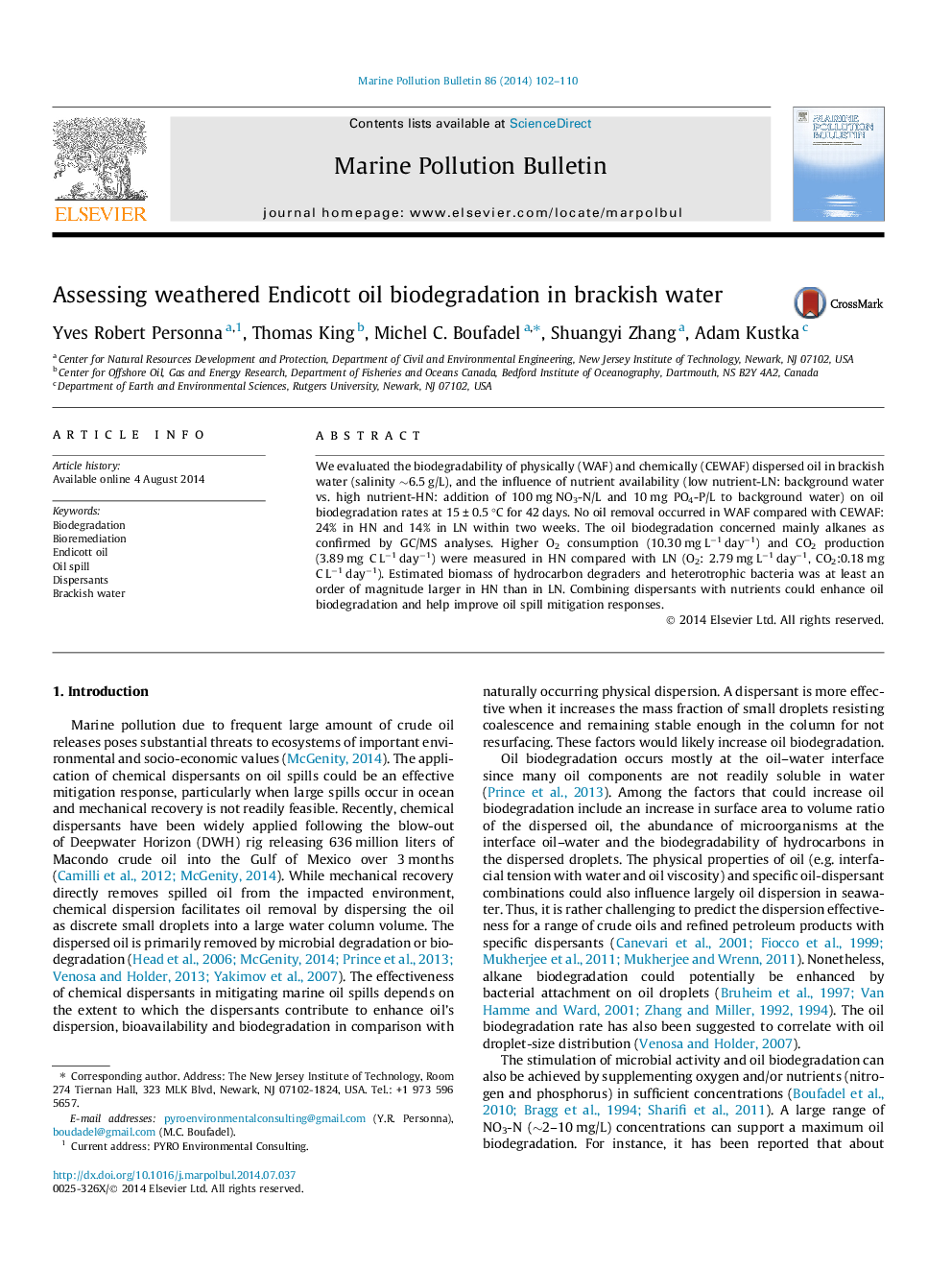| Article ID | Journal | Published Year | Pages | File Type |
|---|---|---|---|---|
| 6357716 | Marine Pollution Bulletin | 2014 | 9 Pages |
Abstract
We evaluated the biodegradability of physically (WAF) and chemically (CEWAF) dispersed oil in brackish water (salinity â¼6.5 g/L), and the influence of nutrient availability (low nutrient-LN: background water vs. high nutrient-HN: addition of 100 mg NO3-N/L and 10 mg PO4-P/L to background water) on oil biodegradation rates at 15 ± 0.5 °C for 42 days. No oil removal occurred in WAF compared with CEWAF: 24% in HN and 14% in LN within two weeks. The oil biodegradation concerned mainly alkanes as confirmed by GC/MS analyses. Higher O2 consumption (10.30 mg Lâ1 dayâ1) and CO2 production (3.89 mg C Lâ1 dayâ1) were measured in HN compared with LN (O2: 2.79 mg Lâ1 dayâ1, CO2:0.18 mg C Lâ1 dayâ1). Estimated biomass of hydrocarbon degraders and heterotrophic bacteria was at least an order of magnitude larger in HN than in LN. Combining dispersants with nutrients could enhance oil biodegradation and help improve oil spill mitigation responses.
Related Topics
Physical Sciences and Engineering
Earth and Planetary Sciences
Oceanography
Authors
Yves Robert Personna, Thomas King, Michel C. Boufadel, Shuangyi Zhang, Adam Kustka,
